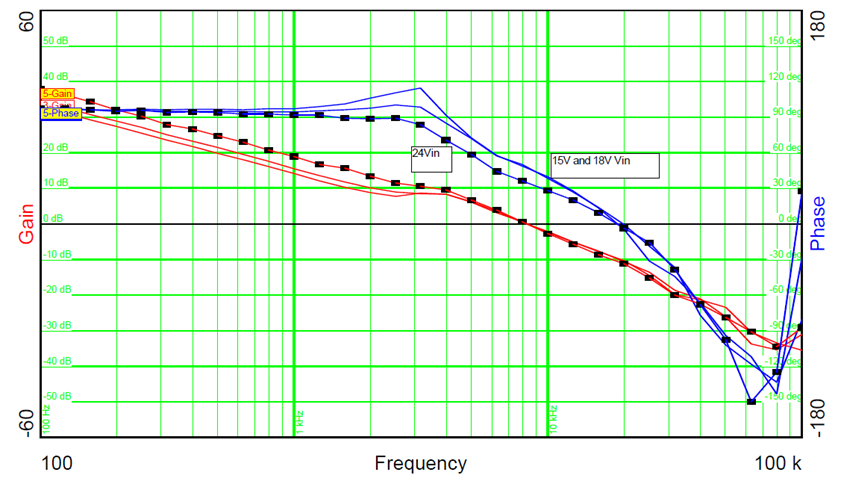TIDT377 December 2023
2.3.1.1 Bode Plot With Battery During Recharging Phase (Constant Current)
For this measurement the battery did not reach the charge voltage; therefore, the SEPIC converter runs in constant-current mode. VIN was set to 15 V, 18 V, and 26 V. Charge current is 1 A, while the battery voltage was 25 V. The line with dots in Figure 2-3 refers to VIN = 24 V
 Figure 2-3 Bode Plot With Battery During
Recharging Phase
Figure 2-3 Bode Plot With Battery During
Recharging Phase